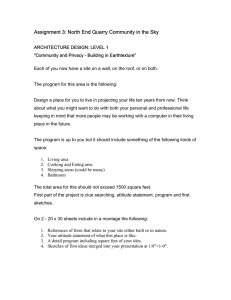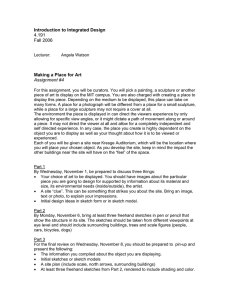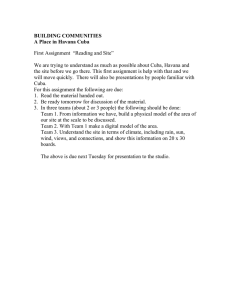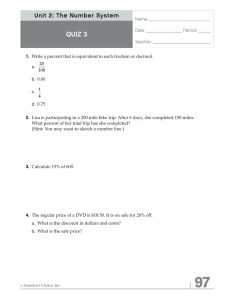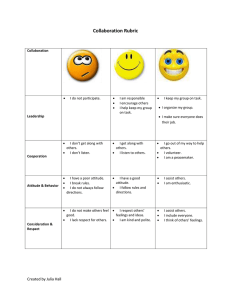BUILDING COMMUNITIES A Place in Havana Cuba Attitude, Concept, Space, Object”
advertisement
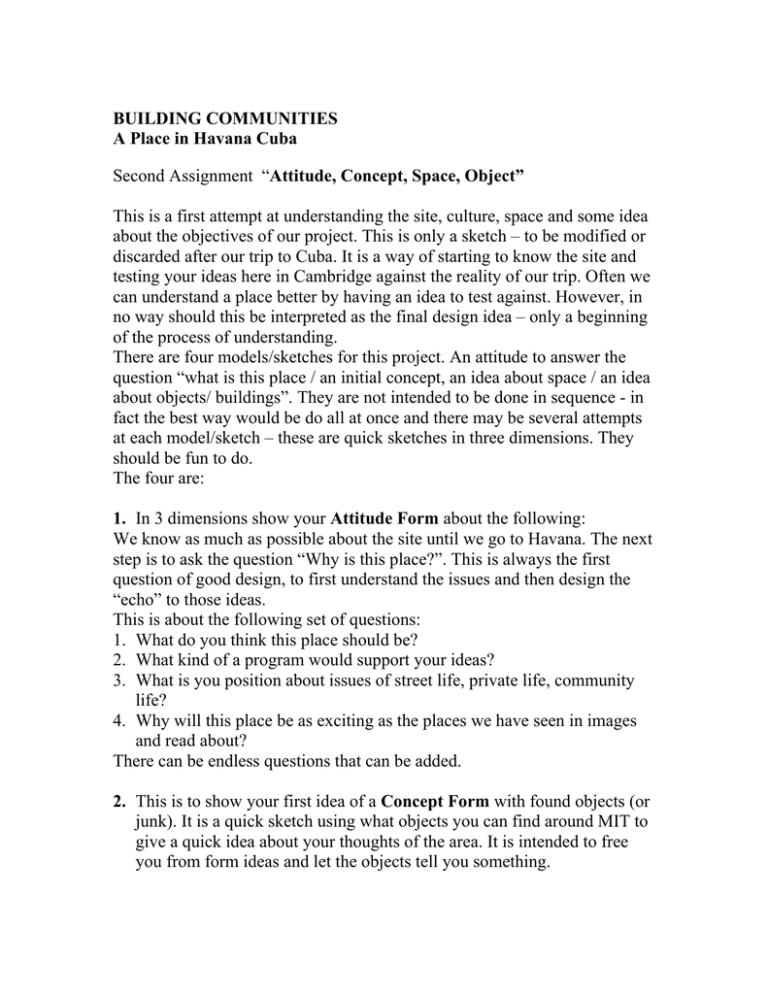
BUILDING COMMUNITIES A Place in Havana Cuba Second Assignment “Attitude, Concept, Space, Object” This is a first attempt at understanding the site, culture, space and some idea about the objectives of our project. This is only a sketch – to be modified or discarded after our trip to Cuba. It is a way of starting to know the site and testing your ideas here in Cambridge against the reality of our trip. Often we can understand a place better by having an idea to test against. However, in no way should this be interpreted as the final design idea – only a beginning of the process of understanding. There are four models/sketches for this project. An attitude to answer the question “what is this place / an initial concept, an idea about space / an idea about objects/ buildings”. They are not intended to be done in sequence - in fact the best way would be do all at once and there may be several attempts at each model/sketch – these are quick sketches in three dimensions. They should be fun to do. The four are: 1. In 3 dimensions show your Attitude Form about the following: We know as much as possible about the site until we go to Havana. The next step is to ask the question “Why is this place?”. This is always the first question of good design, to first understand the issues and then design the “echo” to those ideas. This is about the following set of questions: 1. What do you think this place should be? 2. What kind of a program would support your ideas? 3. What is you position about issues of street life, private life, community life? 4. Why will this place be as exciting as the places we have seen in images and read about? There can be endless questions that can be added. 2. This is to show your first idea of a Concept Form with found objects (or junk). It is a quick sketch using what objects you can find around MIT to give a quick idea about your thoughts of the area. It is intended to free you from form ideas and let the objects tell you something. 3. Space Between Form or designing with space, is intended to sensitize you to making space. Think about the kinds of space you want in your project. This means that space will be thought of as solid/positive, and private parts of the building as void/negative, the opposite to what we know. In this way “paths, places and in-between spaces” organize the buildings. Using Plexiglas or other materials arrange the forms to represent space. Forget about the buildings, just the space. Space can either be shown by intensity of use or actual heights. Show the urban design intervention of water, green space and pier. 4. Object Form, is an initial idea about the design of objects (or buildings) at the block scale. Using wood or materials that are easily changed make a design of the area that “echoes” your design attitude. This should not be drawn first but more like playing with blocks. Several designs may emerge. All should be done at the scale of 1:500 and on a copy of drawing of our area with space around site similar to the model. Due on Thursday Feb 19 at 2pm for Pin Up.
